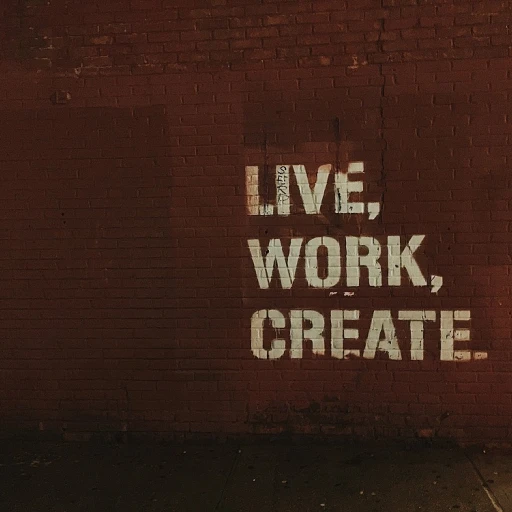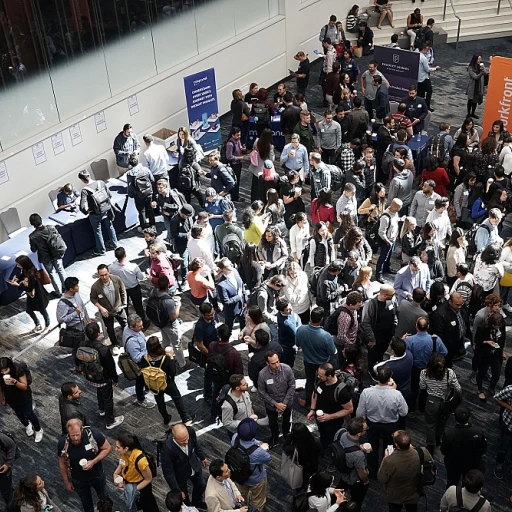
The Concept of Regrettable Employee Turnover
Unpacking the Notion of Regrettable Turnover
In the realm of human resources, employee attrition presents a significant challenge for organizations striving to maintain robust team dynamics and protect their top talent. Within this context, regrettable turnover emerges as a focal point of concern. Unlike employee turnover where employees leave under circumstances that may be unavoidable or even expected—such as retirement or relocation—regrettable attrition highlights scenarios where the departure of highly valued employees is deeply felt by the organization.
Identifying regrettable attrition is crucial, as it affects not only immediate productivity but also the longer-term employee experience and organizational culture. When these valued employees decide to leave, it's not just a loss of skills and expertise. It also impacts employee engagement across the board, potentially driving more departures if not properly managed.
Regrettable turnover can result from multiple factors, often intertwined, including inadequate employee retention strategies, poor management practices, and mismatched work-life balance expectations. These issues are deeply rooted in the organizational framework, making it imperative for HR departments to delve deeper into understanding these causes and implementing best practices for retention.
When employees leave after having been deemed crucial to the company's strategic goals, it casts a spotlight not just on the loss itself but on the underlying factors that led to such outcomes. It necessitates a comprehensive investigation into where the company might be falling short in terms of career development opportunities, fostering inclusive company culture, or engaging its workforce effectively.
For organizations eager to mitigate these adverse effects, understanding the concept of regretted turnover can serve as a stepping stone toward innovation in retention methods. Examining tools that predict risks of employee flight risk can be instrumental in efforts to avoid losing valuable team members in the future.
Identifying the Causes of Regrettable Turnover
Unraveling the Factors Leading to Regrettable Attrition
Understanding why employees leave can be multifaceted, often involving a mix of personal and organizational dynamics. Regrettable turnover is not just about losing an employee; it's about losing the top talent that your organization regrets seeing go. Identifying these root causes is critical for organizations to refine their employee retention strategies.
Several factors contribute to an increase in regrettable attrition rates:
- Lack of Employee Engagement: Employees feel undervalued or disconnected from their teams, often leading to disengagement. Engagement tools and better HR management practices can bridge this gap.
- Work-Life Balance: The desire for a healthy life balance is paramount. Companies must adapt to offering flexibility to their employees, ensuring that work doesn't overshadow personal time.
- Cultural Misalignment: Every organization has a unique culture. Misalignments in values and work culture can prompt employees to leave, seeking a better fit elsewhere.
- Limited Career Development: Employees seek growth in their careers. Lack of advancement opportunities can turn even the best employee away in search of development that aligns with their career goals.
- Weak Management: Poor leadership and management tools can create a toxic work environment, impacting morale and encouraging turnover.
Understanding these factors is key. Aligning organizational practices with AI-driven employee retention strategies can pave the way for better engagement and retention outcomes.
The Role of AI in Predicting Turnover
The Predictive Power of AI in Employee Turnover
In today’s rapidly changing work environment, understanding why employees leave has become a vital task for human resource professionals. A deep dive into the concept and causes of regretted attrition has shown that employee turnover is not just about the numbers but also the broader effects on team dynamics and company culture. AI technologies are proving to be invaluable tools in predicting when an employee might leave. This prediction is not just beneficial for understanding regrettable attrition but essential in retaining top talent and maintaining a competitive organizational edge.
AI-driven systems analyze patterns from past and current data, such as employee engagement scores, attrition rate trends, and career development opportunities. These systems consider diverse factors, ranging from work life balance to team dynamics, which significantly influence whether employees will choose to stay or leave. By identifying patterns in employee experience and sentiment, AI offers predictive insights that can help management mitigate regretted turnover effectively.
AI tools can gather valuable feedback through employee surveys, facilitating the identification of potential risks in employee retention. Enhancing the overall workplace atmosphere, as discussed here, ensures that organizations create a conducive environment for their best employees to feel valued and engaged.
As organizations continue to leverage AI for predicting turnover, they not only refine their understanding of employee attrition but also refine their retention strategies. This approach makes the data and tools accessible to HR teams and furthers the development of best practices in employee retention. It’s imperative for companies to integrate AI into their human resources arsenal to address the challenges of employee turnover head-on.
AI-Driven Strategies to Mitigate Turnover
Leveraging AI for Retention Strategies
In navigating the complexities of regrettable employee turnover, AI-driven strategies present promising avenues for improving retention rates. By examining the existing data and patterns within a company, AI tools can offer insights that human resources teams previously couldn’t access as readily. Here's how AI can be a game-changer for organizations:- Predictive Analytics for Attrition Risk: Leveraging AI, companies can assess the risk of future regrettable attrition by analyzing patterns from past data. Factors such as employee engagement scores, career development opportunities, and team dynamics are crucial in evaluating whether top talent might leave.
- Personalized Engagement Initiatives: With AI, HR professionals can tailor engagement strategies that resonate with individual employee experiences and needs. By understanding the nuances of work life balance, companies can create a culture that enhances both employee retention and satisfaction.
- Identifying Gaps in Employee Experience: AI solutions can sift through feedback from various channels to pinpoint areas where employees feel less valued or engaged. This effective assessment helps management focus efforts on specific areas to mitigate regrettable attrition.
- Streamlined Talent Management: AI tools can assist in creating clear career development paths by evaluating employee strengths and matching them with the best-fit roles within the organization. By doing so, it fosters a culture where employees see long-term opportunities, reducing turnover rates.
Challenges in Implementing AI Solutions
Obstacles in Integrating AI into Human Resources
Implementing AI-driven solutions to address regrettable attrition can present several challenges. These obstacles can impact the effectiveness of AI tools in helping management retain their top talent and reduce employee turnover. The first hurdle often encountered is the challenge of data quality and quantity. AI systems rely heavily on robust data to identify patterns and predict employee behavior. Inadequate or unorganized data can lead to inaccurate predictions, affecting strategic decisions concerning employee retention and engagement. Therefore, organizations must prioritize a streamlined process for collecting and managing workforce data. Another issue is the readiness and adaptability of workplace culture to embrace AI. Companies with a resistant culture may find it hard to integrate AI tools effectively. It requires a mindset shift from leadership and HR teams alike, adopting a forward-thinking approach to leverage AI insights in nurturing a healthy work life balance and engaging employee experience. Moreover, there's the question of choosing the right AI tools. With a plethora of AI solutions available, selecting the best employee retention tools tailored to specific organizational needs can be daunting for HR departments. Companies need to carry out thorough evaluations to ensure these AI solutions align with their retention goals and enhance employee engagement without overwhelming the existing job dynamics. Human oversight remains crucial when deploying AI systems. Dependence solely on AI predictions might overlook the nuances of human labor dynamics such as team dynamics and career development. Therefore, a blend of AI-generated insights with human intuition ensures a sound approach towards understanding why employees leave and implementing best practices. Finally, ethical considerations and employee privacy cannot be overlooked. Transparent communication regarding AI applications in handling employee data fosters trust and reassures employees that AI tools are in place to improve their experience rather than surveil or control them. Companies should also adhere to relevant regulations to maintain compliance. To successfully navigate the integration of AI, companies should focus on building an innovation-driven culture, refining data infrastructure, and fostering collaboration between AI systems and human expertise. In doing so, organizations can move towards reducing regretted attrition and enhancing retention strategies.Future Trends in AI for HR
Anticipating the AI Evolution in HR
The future of AI in human resources is promising, holding the potential to revolutionize employee turnover management and retention strategies. By addressing current challenges, companies could unlock more effective methods of managing regrettable attrition. Several key trends are emerging that may shape the integration of artificial intelligence in HR practices:- Enhanced Predictive Analytics: As data quality and collection methods improve, predictive analytics will become an even more powerful tool for foreseeing employee turnover. Organizations will be better equipped to anticipate which employees might become disengaged or encounter work-life imbalance issues, allowing preemptive measures to be more effectively tailored.
- Next-Generation AI Tools: New AI-driven tools are likely to emerge, designed specifically to augment employee engagement and enhance the employee experience. These tools will leverage machine learning algorithms to provide insights into team dynamics, career development, and cultural fit, ultimately contributing to retention efforts.
- Focus on Employee Experience: AI will enable a more personalized approach to employee experience management. By analyzing patterns and feedback, companies can refine their approaches to meet employees' expectations and foster a supportive work environment that celebrates diversity and inclusion.
- Integration of Soft Skills Analysis: Traditional metrics may give way to more nuanced analyses that incorporate soft skills and emotional intelligence. Enhancing understanding of these aspects will allow more meaningful career development opportunities and improve employee engagement.
- AI-Enhanced Personal Development Plans: With AI, organizations can create dynamic personal development plans that align with both company goals and employees' career aspirations. This alignment is critical in nurturing top talent and reducing regrettable attrition.
- Continuous Innovation in AI Applications: The landscape of AI in HR is ever-evolving, promising continuous innovation. Familiarity with leading-edge AI solutions will be crucial for HR professionals to maintain competitive advantages in talent management and employee retention.












